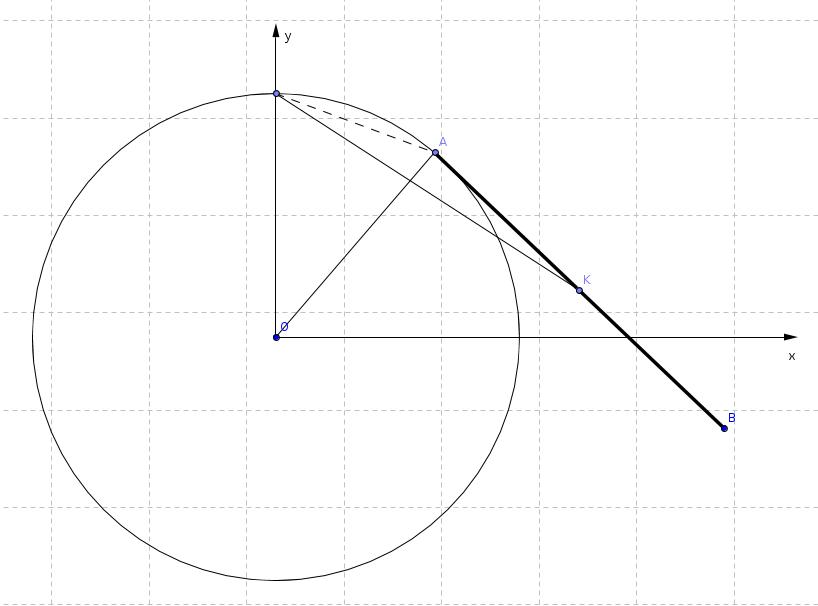EDITED: The number of bonds is actually 2, not 1 (look at edit history). Fixed for archiving purposes.
Problem: The edge A of an homogeneous rod (of length $\ell$ and mass $m$) is performing a smooth circular motion around the center $O$ with a constant angular speed $\omega$. The motion takes place on the $Oxy$ plane without friction under the action of an attractive force $\vec{F}=-k \vec{r}_k$ (k>0), where $\vec{r}_k$ is the vector position of the center of mass. Note: In the original image from my textbook, it appears as if $F_k$ acts towards $(x,y)=(0,1)$ and not towards the origin $(0,0)$. There is no gravity.
Goal: To calculate the Lagrangian of the system.
Attempted solution: The rod is a solid body moving on a 2-dimensional plane. Therefore there are $3n-k$ degrees of freedom, where $n$ is the number of the bodies (here $n=1$) and $k$ is the number of bonds (here $k=2$), since the edge A is confined to move along the circle and the angular speed is constant. Subsequently, one needs 1 generalized coordinate to describe the system.
$\phi$ is angle between $(OA)$ and $Ox$ for which $|\dot{\phi}|=|\omega|$, but what would the generalized coordinate be ?

Based on the answer from @pppqqq, here is an updated diagram of the problem:

Pending issues: (These have been answered by @pppqqq)
- Are we assuming that the length of the rod is $\ell'=2\ell$ ? If not, shouldn't it be $x_{CM} = R\cos\phi + (\ell/2) \cos\theta$ ?
- Shouldn't $y_{CM}$ be $y_{CM} = R sin\phi−\ell\sin\theta$ (assuming that the length of the rod is $2\ell$)?
